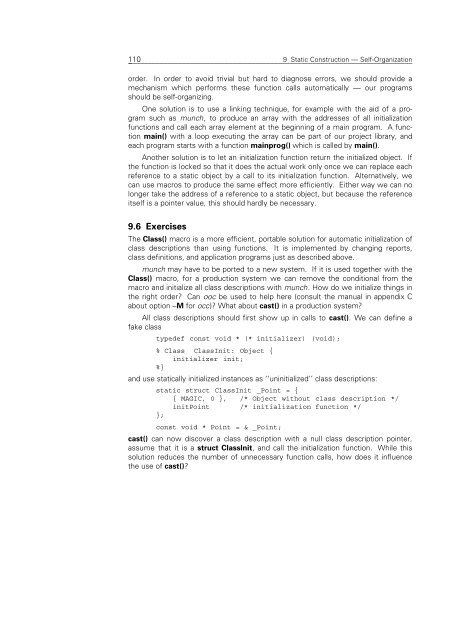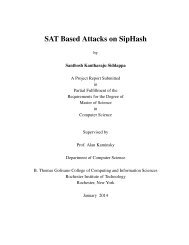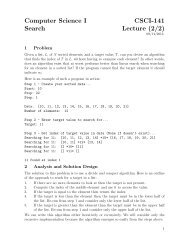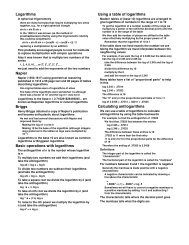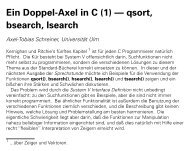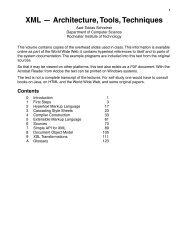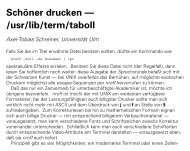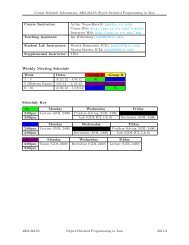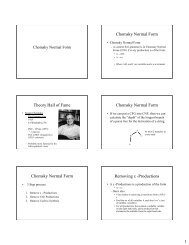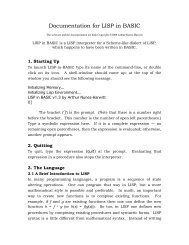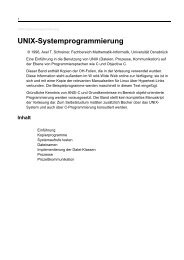Object-Oriented Programming With ANSI-C (pdf)
Object-Oriented Programming With ANSI-C (pdf)
Object-Oriented Programming With ANSI-C (pdf)
Create successful ePaper yourself
Turn your PDF publications into a flip-book with our unique Google optimized e-Paper software.
110 __________________________________________________________________________<br />
9 Static Construction — Self-Organization<br />
order. In order to avoid trivial but hard to diagnose errors, we should provide a<br />
mechanism which performs these function calls automatically — our programs<br />
should be self-organizing.<br />
One solution is to use a linking technique, for example with the aid of a program<br />
such as munch, to produce an array with the addresses of all initialization<br />
functions and call each array element at the beginning of a main program. A function<br />
main() with a loop executing the array can be part of our project library, and<br />
each program starts with a function mainprog() which is called by main().<br />
Another solution is to let an initialization function return the initialized object. If<br />
the function is locked so that it does the actual work only once we can replace each<br />
reference to a static object by a call to its initialization function. Alternatively, we<br />
can use macros to produce the same effect more efficiently. Either way we can no<br />
longer take the address of a reference to a static object, but because the reference<br />
itself is a pointer value, this should hardly be necessary.<br />
9.6 Exercises<br />
The Class() macro is a more efficient, portable solution for automatic initialization of<br />
class descriptions than using functions. It is implemented by changing reports,<br />
class definitions, and application programs just as described above.<br />
munch may have to be ported to a new system. If it is used together with the<br />
Class() macro, for a production system we can remove the conditional from the<br />
macro and initialize all class descriptions with munch. How do we initialize things in<br />
the right order? Can ooc be used to help here (consult the manual in appendix C<br />
about option −M for occ)? What about cast() in a production system?<br />
All class descriptions should first show up in calls to cast(). We can define a<br />
fake class<br />
typedef const void * (* initializer) (void);<br />
% Class ClassInit: <strong>Object</strong> {<br />
initializer init;<br />
%}<br />
and use statically initialized instances as ‘‘uninitialized’’ class descriptions:<br />
static struct ClassInit _Point = {<br />
{ MAGIC, 0 }, /* <strong>Object</strong> without class description */<br />
initPoint /* initialization function */<br />
};<br />
const void * Point = & _Point;<br />
cast() can now discover a class description with a null class description pointer,<br />
assume that it is a struct ClassInit, and call the initialization function. While this<br />
solution reduces the number of unnecessary function calls, how does it influence<br />
the use of cast()?


